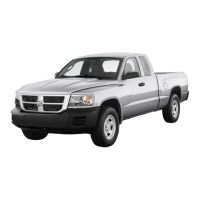
Do you have a question about the Dodge 2008 Dakota and is the answer not in the manual?
| Brand | Dodge |
|---|---|
| Model | 2008 Dakota |
| Category | Automobile |
| Language | English |
Warnings against operating procedures that could result in accident or injury, and cautions against procedures causing vehicle damage.
Location and importance of the VIN plate and its information.
Warning about how modifications can affect roadworthiness and safety.
Information about key code numbers and ordering duplicate keys from the dealer.
Explanation of the Sentry Key Immobilizer System's function and operation.
Description of the passive steering wheel lock and how to engage/disengage it.
Details on how to set, disarm, and the system's monitoring capabilities.
How to lock, unlock doors, and activate the panic alarm remotely.
Manual and power door lock operation, including child protection.
Operation of power windows, including auto-down and lockout features.
Information on seat belts, airbags, and child restraint systems for occupant safety.
Functionality and customization of the driver's seat belt reminder system.
Explanation of front and side airbag systems, their deployment, and safety precautions.
Guidelines for breaking in the new vehicle's engine for optimal performance and longevity.
Important safety advice, including exhaust system precautions and engine coolant checks.
Checks for heater defroster ducts, seat belts, and airbag light operation.
Checks for tires, lights, and fluid leaks.
Adjusting inside and outside mirrors, and features like folding exterior mirrors.
Overview of the voice-activated UConnect system for phone calls and its requirements.
Manual seat adjustment, recliners, and lumbar support.
Proper adjustment of head restraints for rear impact protection.
Information on rear seat functionality for cargo space or passenger seating.
Operation and safety precautions for heated seat features.
Procedure for opening and closing the vehicle's hood.
Operation of interior and exterior lights, including battery saver and headlamp delay.
Operation of turn signals, passing lights, and high/low beam selection.
Operation of windshield wipers and washers, including intermittent settings.
How to activate, set, and deactivate the cruise control system.
Features of the overhead console, including lights and optional openers/computers.
How to use the US/M button and reset displays for trip information.
Information on programming and using the HomeLink system.
FCC compliance and operational conditions for electronic devices.
Location and usage of 12V auxiliary power outlets.
Features of the floor console, including storage and power outlets.
Location and usage of rear convenience storage crates.
Operation of the rear window defroster and sliding window.
Procedure for removing and reinstalling the tailgate.
Information on adjustable cleats for securing cargo in the utility rails.
Information on camper applications and general warranty for aftermarket equipment.
Overview of the vehicle's dashboard layout and component identification.
Visual representation and numbering of instrument cluster gauges and indicators.
Detailed explanation of each gauge and warning light on the instrument cluster.
Understanding radio broadcast signals, AM/FM reception, and electrical disturbances.
Operating instructions for the RES radio model in radio and CD modes.
Operating instructions for the REQ radio model, including CD/DVD and MP3 playback.
Instructions for using the satellite radio system, including activation and modes.
Guidance for operating the optional Video Entertainment System.
Location and operation of the steering wheel mounted sound system controls.
Precautions for keeping compact discs in good condition for playback.
Control of lighting effects in the sound box that pulsate with music.
Operation of heating, ventilation, and air conditioning systems using rotary controls.
Tips for fast cooldown, window fogging, and general climate control usage.
Steps for starting the engine, including precautions for the starter and warnings about resting in the vehicle.
Procedure for starting a warm or cold engine and handling a flooded engine.
Precautions for operating the automatic transmission and checking fluid levels.
Explanation of different gear selector positions (P, R, N, D, 2, 1) and their usage.
How the overdrive feature functions and conditions for its automatic engagement.
Guidance on using the TOW/HAUL mode for towing and heavy loads.
Instructions for operating the manual transmission, including clutch usage and shifting.
Guidelines for upshifting and downshifting for fuel economy and performance.
Information on operating the NV233/243 transfer case and its different modes.
Benefits and operation of the limited-slip differential for improved traction.
Precautions for driving on wet, slushy, or icy surfaces, including hydroplaning.
Guidelines and cautions for driving through standing water to prevent damage.
How to operate the parking brake and precautions for parking on inclines.
Explanation of brake system operation, including ABS and rear-wheel ABS.
Description of the standard power steering system and its capabilities.
Information on tire grading categories: Treadwear, Traction, and Temperature.
Explanation of tire size designation and its components.
Explanation of Load Index and Speed Symbol designations for tires.
How to locate and interpret the Tire Identification Number on the tire sidewall.
Importance of proper tire loading and inflation pressure, and placard location.
Steps to determine the correct load limit for the vehicle and cargo.
Safety tips and definitions for towing a trailer with the vehicle.
Industry standard classes for trailer hitches and their weight capacities.
Guidelines for proper break-in of drivetrain components and safe towing practices.
Precautions regarding tire usage and inflation for trailer towing.
Information on trailer brake systems and controller requirements.
Safety requirements for trailer lights and wiring, and package information.
Tips for towing with an automatic transmission, including TOW/HAUL feature and fluid changes.
Actions to reduce potential for engine and transmission overheating during towing.
Warning against using the vehicle for snowplow applications due to potential damage and airbag system interference.
Procedures for recreational towing of 2WD and 4WD models, including transfer case and transmission settings.
Location and information found on the vehicle's equipment identification plate.
Operation of the hazard warning flasher system for emergency signaling.
Guidelines for safely adding fuel using a portable container.
Step-by-step procedure for changing a flat tire, including jack location and usage.
Procedure for removing the spare tire and attaching the jack extension.
Detailed preparation and instructions for safely changing a tire.
Warnings and procedures for jump-starting a vehicle's battery.
Techniques for freeing a vehicle stuck in snow, sand, or mud using a rocking motion.
Location and usage of emergency tow hooks, with safety warnings.
Proper towing or lifting equipment and methods for disabled vehicles.
Identification of key components in the 3.7L engine compartment.
Identification of key components in the 4.7L engine compartment.
Explanation of the OBD II system, malfunction indicator light, and service requirements.
How the vehicle detects and alerts for a loose or damaged fuel filler cap.
Requirements for emissions testing and OBD system readiness.
Recommendation to use genuine Mopar parts for maintenance and repairs.
Benefits of using authorized dealers for expert service and specialized tools.
Overview of required maintenance services and potential issues from neglecting them.
Proper procedure for checking and maintaining engine oil level.
Factors affecting oil change intervals and recommended schedules based on driving conditions.
Precautions for driving in dusty conditions and maintaining the engine air cleaner.
Recommendations for API certified engine oils and correct SAE viscosity grades.
Inspection of drive belts for condition and tension, and replacement criteria.
Importance of spark plugs for engine performance and replacement intervals.
Replacement intervals for the air cleaner filter based on driving conditions.
Function of the fuel filter and when replacement may be necessary.
Requirements for catalytic converter operation, including unleaded fuel usage.
Information on the sealed nature and lack of maintenance for the battery.
Recommended service for the air conditioning system at the start of warm seasons.
When and how to check power steering fluid level, and necessary precautions.
Inspection of ball joints and seals for damage or leakage.
Inspection of drive shaft boots for external leakage or damage.
Periodic lubrication of body pivot points for smooth operation and rust prevention.
Cleaning and maintenance of wiper blades to prevent deterioration.
Checking fluid level and preparing the washer system for cold weather.
Importance of a properly maintained exhaust system for preventing carbon monoxide entry.
Warnings about hot coolant and procedures for checking coolant levels and pressure caps.
Intervals and procedures for draining, flushing, and refilling the cooling system.
Recommendations for using and mixing HOAT engine coolant for extended service intervals.
Importance of the pressure cap for maintaining coolant levels and preventing loss.
Proper procedures for disposing of used engine coolant and preventing environmental harm.
Checking the fluid level for the front axle.
Factors affecting vehicle body corrosion and recommendations for prevention.
How geographic location and usage affect vehicle body requirements for corrosion protection.
Guidelines for regularly washing the vehicle to maintain paint and finish.
Advice for driving on salted/dusty roads, chip repair, and handling special cargo.
Cleaning procedures for wheels and wheel trim, especially aluminum and chrome.
Step-by-step instructions for cleaning YES Essentials fabric seats.
Cleaning recommendations for fabric, vinyl, and leather upholstery using Mopar products.
Guidelines for cleaning glass surfaces without scratching elements.
Caution regarding installation of hanging air fresheners and potential damage.
How to clean the plastic lenses of the instrument cluster without scratching.
Proper cleaning and replacement guidelines for seat belts and buckles.
Location of the power distribution center and information on fuses and relays.
Steps to minimize battery drain when storing the vehicle for extended periods.
List of interior and exterior light bulb numbers for replacement.
Procedures for replacing headlight bulbs and front park/turn signal bulbs.
Step-by-step guide for replacing rear lighting components.
Procedure for removing and replacing the CHMSL and cargo lamp assembly.
How to remove and rotate the socket for license lamps.
Procedure for disconnecting the connector, rotating the bulb, and installing fog lamps.
Table of vehicle fluid capacities for fuel, engine oil, and cooling system.
Component-specific recommendations for engine fluids, lubricants, and parts.
Fluid recommendations for automatic transmission, transfer case, axles, and brake systems.
Importance of scheduled maintenance for the emission control system's proper function.
Information on the oil change indicator system and its reset procedure.
Table detailing required maintenance items and their service intervals by miles, kilometers, or months.
Tips for preparing for service appointments, including warranty work and maintenance logs.
Manufacturer's commitment to customer satisfaction and recommended service channels.
Reference to the Warranty Information Booklet for terms and provisions of vehicle warranties.
Information on Mopar fluids, lubricants, parts, and accessories for optimal vehicle operation.
How to report vehicle safety defects to NHTSA (US) and Transport Canada (Canada).
Information on ordering service manuals, diagnostic manuals, and owner's manuals.
Explanation of DOT tire grading categories: Treadwear, Traction, and Temperature.
How the treadwear grade is rated and its relation to tire wear rate.
Explanation of tire traction grades and their measurement for wet pavement stopping.
Explanation of tire temperature grades and their relation to heat resistance and potential failure.
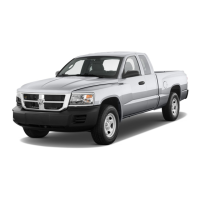
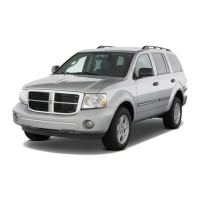
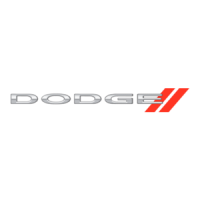
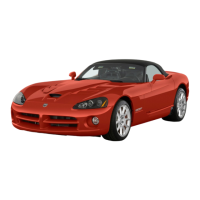
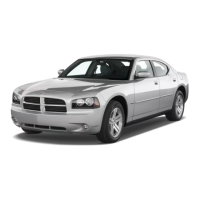
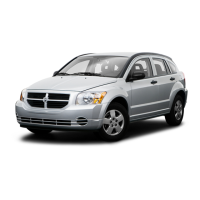
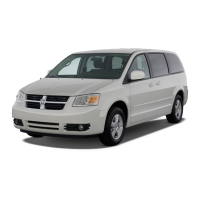
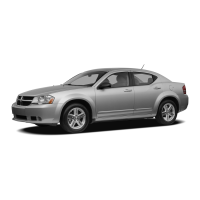
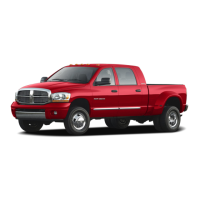
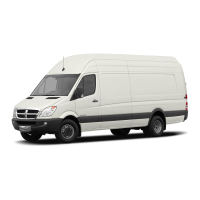
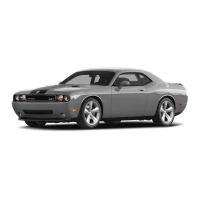
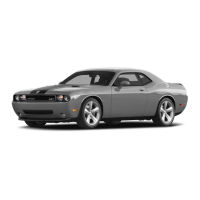
